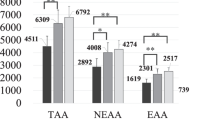Abstract
The differences in therapeutic effectiveness between sustained low-efficiency dialysis (SLED) and continuous blood purification (CBP) were investigated. In order to assess the different treatment methods, 56 critically ill patients were divided into two groups, the CBP group and the SLED group. A comparison was made between all the biochemical indicators, in-hospital duration, hemodynamic parameters, acute physiology and chronic health evaluation (APACHE-II), the survival, and the mortality rates. After treatment, the levels of serum creatine kinase isozyme MB (CK-MB), creatine kinase, creatinine, glutamate-oxalacetate transaminase (AST), glutamate-pyruvate transaminase (ALT), APACHE II score on the 1st, 2nd, and 7th day in both the treatment groups were lower than that before the treatment (P < 0.05). There are no statistical differences in in-hospital duration, biochemical indicators, APACHE II score, hemodynamic parameters, the survival rate and the mortality rate between the two groups (P > 0.05). It was concluded that SLED has similar hemodynamic stability with CBP and the two methods have similar treatment effects in critically ill patients. However, we noticed that SLED can be relatively economical and convenient for critically ill patients in clinical practice.
Similar content being viewed by others
References
Bagshaw, S. M., Bellomo, R., Devarajan, P., Johnson, C., Karvellas, C. J., Kutsiogiannis, D. J., et al. (2010). Review article: Renal support in critical illness. Canadian Journal of Anaesthesia, 57(11), 999–1013.
Ronco, C., Bagshaw, S. M., Gibney, R. T., & Bellomo, R. (2008). Outcome comparisons of intermittent and continuous therapies in acute kidney injury: What do they mean? International Journal of Artificial Organs, 31(3), 213–220.
Mehta, R. L. (2005). Continuous renal replacement therapy in the critically ill patients. Kidney International, 67(2), 781–795.
Kumar, V. A., Craig, M., Depner, T. A., & Yeun, J. Y. (2000). Extended daily dialysis: A new approach to renal replacement for acute renal failure in the intensive care unit. American Journal of Kidney Diseases, 36(2), 294–300.
Marshall, M. R., Golper, T. A., Shaver, M. J., Alam, M. G., & Chatoth, D. K. (2001). Sustained low-efficiency dialysis for critically ill patients requiring renal replacement therapy. Kidney International, 60(2), 777–785.
Marshall, M. R., Ma, T., Galler, D., Rankin, A. P., & Williams, A. B. (2004). Sustained low-efficiency daily diafiltration (SLEDD-f) for critically ill patients requiring renal replacement therapy: Towards an adequate therapy. Nephrology, Dialysis, Transplantation, 19(4), 877–884.
Kielstein, J. T., Kretschmer, U., Ernst, T., Hafer, C., Bahr, M. J., Haller, H., et al. (2004). Efficacy and cardiovascular tolerability of extended dialysis in critically ill patients: A randomized controlled study. American Journal of Kidney Diseases, 43(2), 342–349.
Berbece, A. N., & Richardson, R. M. (2006). Sustained low-efficiency dialysis in the ICU: Cost, anticoagulation, and solute removal. Kidney International, 70(5), 963–968.
Saito, A. (2010). Current progress in blood purification methods used in critical care medicine. Contributions to Nephrology, 166, 100–111.
Hirasawa, H. (2010). Indications for blood purification in critical care. Contributions to Nephrology, 166, 21–30.
Kramer, P., Wigger, W., Rieger, J., Matthaei, D., & Scheler, F. (1977). Arteriovenous haemofiltration: A new and simple method for treatment of over-hydrated patients resistant to diuretics. klinische Wochenschrift, 55(2), 1121–1122.
Morabito, S., Pistolesi, V., Cibelli, L., & Pierucci, A. (2009). Continuous renal replacement therapies (CRRT) will remain the most widely adopted dialysis modality in the critically ill. Giornale Italiano di Nefrologia: Organo Ufficiale Della SOCIETA Italiana di Nefrologia, 26(1), 13–21.
Schlaeper, C., Amerling, R., Manns, M., & Levin, N. W. (1999). High clerance continuous renal replacement therapy with a modified dialysis machine. Kidney International, 56(72), S20–S30.
Van Biesen, W., Eloot, S., Verleysen, A., Glorieux, G., Veys, N., Vanholder, R., et al. (2006). Clamping of the dialysate outlet line in the genius dialysis system does not alter dialysate flow or clearances. Nephrology, Dialysis, Transplantation, 21(4), 1069–1072.
Lund, B., Seifert, S. A., & Mayersohn, M. (2005). Efficacy of sustained low-efficiency dialysis in the treatment of salicylate toxicity. Nephrology, Dialysis, Transplantation, 20(7), 1483–1484.
Khan, E., Huggan, P., Celi, L., et al. (2008). Sustained low-efficiency dialysis with filtration (SLED-f) in the management of acute sodium valproate intoxication. Hemodialysis International, 12(2), 211–214.
Fiaccadori, E., Maggiore, U., Parenti, E., et al. (2008). Sustained low-efficiency dialysis (SLED) for acute lithium intoxication. NDT Plus, 1(5), 329–332.
Fieghen, H. E., Friedrich, J. O., Burns, K. E., Nisenbaum, R., Adhikari, N. K., Hladunewich, M. A., et al. (2010). The hemodynamic tolerability and feasibility of sustained low efficiency dialysis in the management of critically ill patients with acute kidney injury. BMC Nephrology, 11, 32.
Baldwin, I., Bellomo, R., Naka, T., Koch, B., & Fealy, N. (2007). A pilot randomized controlled comparison of extended daily dialysis with filtration and continuous veno-venous hemofiltration: Fluid removal and hemodynamics. International Journal of Artificial Organs, 30(12), 1083–1089.
Author information
Authors and Affiliations
Corresponding author
Rights and permissions
About this article
Cite this article
Cheng, J., Hu, S., Lu, H. et al. Comparison of the Therapeutic Effectiveness of Sustained Low-Efficiency Dialysis (SLED) with Continuous Blood Purification (CBP) in Critically Ill Patients. Cell Biochem Biophys 67, 923–927 (2013). https://doi.org/10.1007/s12013-013-9583-y
Published:
Issue Date:
DOI: https://doi.org/10.1007/s12013-013-9583-y




